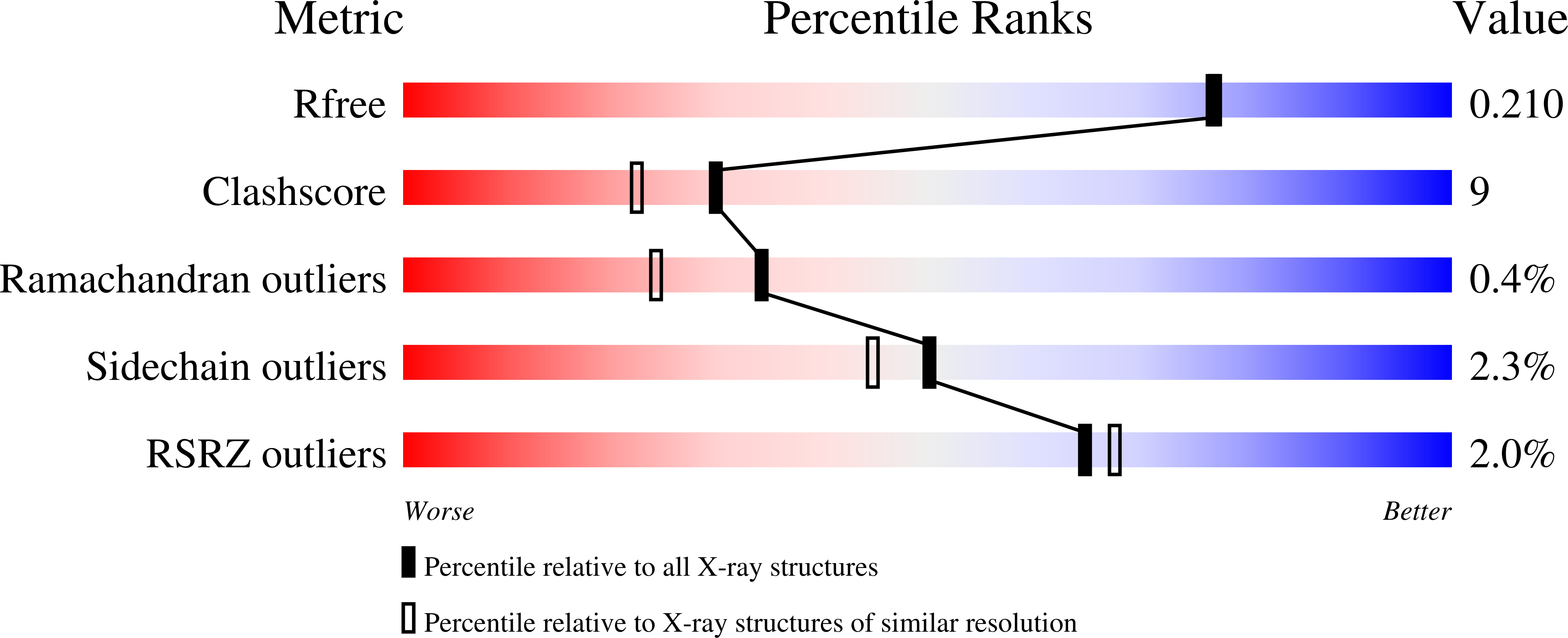Synthesis, enzymatic activity, and X-ray crystallography of an unusual class of amino acids.
Chen, W., Kuntz, D.A., Hamlet, T., Sim, L., Rose, D.R., Mario Pinto, B.(2006) Bioorg Med Chem 14: 8332-8340
- PubMed: 17010621
- DOI: https://doi.org/10.1016/j.bmc.2006.09.004
- Primary Citation of Related Structures:
2FYV - PubMed Abstract:
The synthesis of two novel amino acids, nitrogen analogues of the naturally occurring glycosidase inhibitor, salacinol, containing a carboxylate inner salt are described, along with the crystal structure of one of these analogues in the active site of Drosophila melanogaster Golgi mannosidase II (dGMII). Salacinol, a naturally occurring sulfonium ion, is one of the active principals in the aqueous extracts of Salacia reticulata that are traditionally used in Sri Lanka and India for the treatment of diabetes. The synthetic strategy relies on the nucleophilic attack of 2,3,5-tri-O-benzyl-1,4-dideoxy-1,4-imino l- or d-arabinitol at the least hindered carbon of 5,6-anhydro-2,3-di-O-benzyl-l-ascorbic acid to yield coupled adducts. Deprotection, stereoselective catalytic reduction, and hydrolysis of the coupled products give the target compounds. The compound derived from d-arabinitol inhibits dGMII, one of the critical enzymes in the glycoprotein processing pathway, with an IC(50) of 0.3mM. Inhibition of GMII has been identified as a target for control of metastatic cancer. An X-ray crystal structure of the complex of this compound with dGMII provides insight into the requirements for an effective inhibitor. The same compound inhibits recombinant human maltase glucoamylase, one of the key intestinal enzymes involved in the breakdown of glucose oligosaccharides in the small intestine, with a K(i) value of 21microM.
Organizational Affiliation:
Department of Chemistry, Simon Fraser University, Burnaby, BC, Canada V5A 1S6.



















